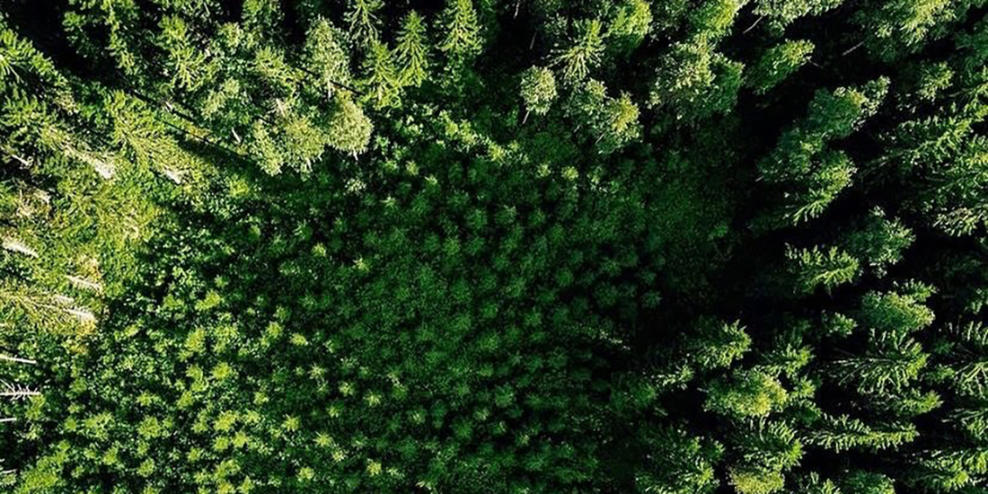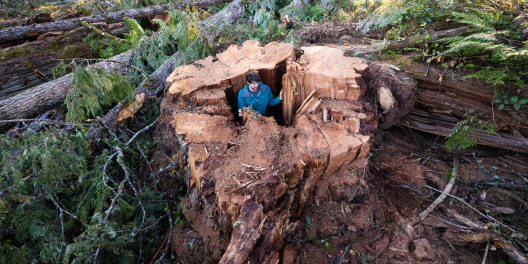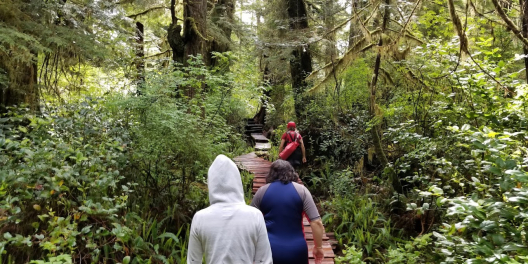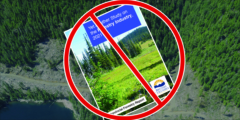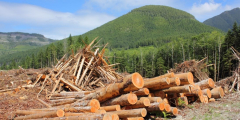The K’omoks First Nation is nearing the final stages of signing a historic treaty with the provincial and federal governments. The treaty will include recognition of certain rights around self-government and access to resources, as well as cash and a transfer of land.
The amount of cash on offer is still under wraps. However last September at an open house, the public had a chance to view what lands government negotiators were putting on the table. A quick look at the map is like a crash course in Vancouver Island’s colonial history and the Esquimalt & Nanaimo (E&N) Land Grant.
As part of the terms of British Columbia joining the young country of Canada in 1871, a deal was cut to privatize 8,000 square kms of southeast Vancouver Island. It was meant to encourage settlement and resource extraction and also to incentivize the construction of a railway.
The spoils went to Robert Dunsmuir. He built a family empire from coal and timber. He never managed to build that railway to Campbell River.
Let’s put this into the context of the K’omoks First Nation and its modern treaty. Nearly their entire traditional territory was stolen and given away more than a century ago.
Consequently, the province and federal government have had to cobble together a patchwork of what little Crown land remains roughly between Fanny Bay and Oyster River. It includes Wood Mountain Provincial Park (the old Forbidden Plateau ski area) and a woodlot near the base of the Mount Washington road that has been family-run for 30 years.
Now, this family ponders the possibility of having its Crown woodlot license revoked as part of the treaty process. But it’s business as usual for the companies that own massive chunks of the former E&N lands and have been making massive profits for decades.
The biggest players are Timberwest, which owns 3,250 sq km, and Island Timberlands, which owns 2,540 sq km. Both are managed by Mosaic Forest Management.
By any reasonable interpretation of history these are ill-gotten lands.
So, here’s an idea. Imagine if Mosaic, on behalf of its clients Timberwest and Island Timberlands, offered up a small portion of its private holdings to be included in KFN treaty lands. What a profound gesture of good faith that would be.
Of course, that’s unlikely. The bean counters at head office would cry foul. But it’s no less foul than the E&N Land Grant was back in the late 1800s.
As one member of the KFN negotiating team said in an interview last September, the land on offer right now is less than 2 percent of its traditional territory.
Mosaic should see it as an opportunity to get involved—with some of its managed private lands.
It wouldn’t right an historic wrong, but it would go a long way in terms of good corporate citizenship.

